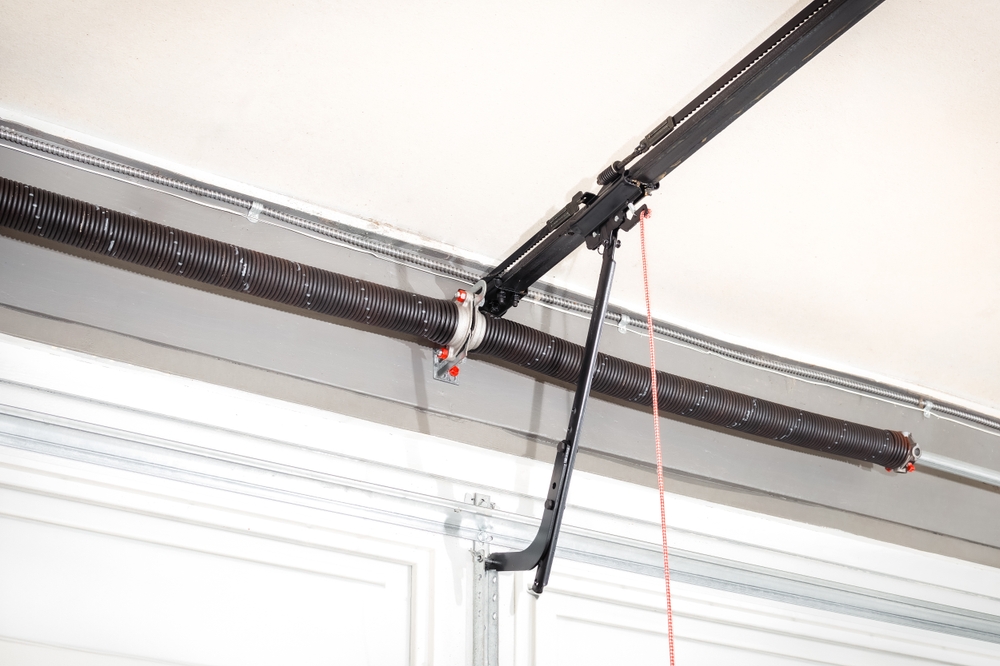
Dos and Donts with Garage Springs Maintenance
Maintaining your garage door springs is a crucial part of keeping your garage door operating smoothly and safely. Garage door springs bear the weight of the entire door, and any issue with them can lead to serious malfunctions, injuries, or expensive repairs. If you’re wondering how to safely handle garage door springs, this guide outlines the essential dos and don’ts you need to follow for effective maintenance and safety.
Understanding Garage Door Springs
Before diving into maintenance tips, it’s important to understand the two main types of garage door springs:
- Torsion Springs: These are located above the garage door and twist to lift and lower the door. Torsion springs are known for their durability and ability to hold heavy weights.
- Extension Springs: Found along the sides of the garage door, extension springs stretch and contract to move the door up and down.
Both types of springs are under extreme tension, making them potentially dangerous if handled improperly. Now, let’s explore the dos and don’ts of garage spring maintenance.
The Dos of Garage Spring Maintenance
Do Perform Regular Visual Inspections
One of the simplest and most effective ways to maintain your garage springs is through regular visual inspections. Look for signs of wear and tear, such as:
- Rust or corrosion
- Gaps in the springs
- Loose or frayed cables attached to the springs
Performing these checks monthly allows you to identify problems early and take appropriate action before they escalate.
Do Test Spring Balance
Garage door springs are designed to counterbalance the door’s weight. Over time, springs may lose their tension, causing the door to become imbalanced. To test the balance:
- Disconnect the garage door opener.
- Manually lift the door halfway.
- Release the door slowly.
If the door stays in place, the springs are balanced. If it falls or rises, the springs may need adjustment. Testing the balance helps you determine if further action or professional assistance is required.
Do Lubricate Springs Regularly
Lubrication is essential for extending the lifespan of your garage door springs. Use a high-quality silicone or lithium-based spray lubricant to prevent rust and reduce friction. Apply the lubricant to the springs, rollers, and other moving parts every 6-12 months to keep the door operating smoothly.
Avoid using grease, as it can attract dust and grime, which may damage the springs over time.
Do Use Proper Safety Equipment
When performing any maintenance, prioritize safety. Use the following equipment to protect yourself:
- Safety glasses to shield your eyes from debris
- Thick gloves to prevent injuries from sharp or rough parts
- A sturdy ladder for better access to the springs
Proper equipment minimizes risks when handling garage door components.
Do Call a Professional for Repairs or Replacement
Handling garage door springs on your own can be extremely dangerous, especially if you lack the proper tools and experience. If you notice any significant issues, such as broken springs or excessive tension, contact a professional garage door technician. They have the expertise to safely repair or replace the springs and prevent potential accidents.
The Don’ts of Garage Spring Maintenance
Don’t Attempt to Adjust or Replace Springs Yourself
Garage door springs are under high tension and can cause severe injuries if mishandled. Adjusting or replacing springs without proper training and tools is risky. DIY attempts can result in:
- Springs snapping and causing physical harm
- Damage to the garage door system
- Expensive repairs from improper handling
Always leave adjustments and replacements to professionals who know how to safely handle garage door springs.
Don’t Ignore Signs of Wear or Damage
Ignoring visible signs of wear or damage can lead to complete spring failure. If you notice any of the following, don’t delay in taking action:
- Loud noises when opening or closing the door
- A garage door that doesn’t open smoothly
- Uneven movement or sagging of the door
These issues often indicate problems with the springs. Prompt attention will save you from costly repairs and ensure safety.
Don’t Use the Wrong Lubricant
While lubrication is vital, using the wrong type of lubricant can cause more harm than good. Avoid:
- WD-40 or similar multi-use sprays, as they are not designed for heavy-duty lubrication
- Grease, which collects dirt and debris over time
Stick to a silicone-based or lithium-based lubricant specifically designed for garage door components.
Don’t Operate the Door with Broken Springs
If you suspect a spring is broken, avoid using the garage door altogether. Operating a door with a broken spring places extra strain on the opener and can cause further damage to the door system. It also increases the risk of accidents.
Instead, leave the door closed and call a professional technician to assess and resolve the issue.
Don’t Overlook the Importance of Both Springs
If your garage door uses two springs, it’s crucial to replace both springs at the same time, even if only one appears to be damaged. This is because springs wear out at similar rates. Replacing just one spring can lead to an imbalance and additional stress on the door.
Professional technicians understand this principle and will ensure both springs are replaced correctly.
Signs It’s Time to Replace Your Garage Door Springs
While routine maintenance can extend the lifespan of your springs, there will come a time when replacement becomes necessary. Here are clear signs to watch for:
- Broken Springs: If you see a visible gap or a snapped spring, immediate replacement is needed.
- Difficulty Lifting the Door: Struggling to open or close the door indicates the springs are losing tension.
- Excessive Noise: Squeaking or grinding noises may signal worn-out springs.
- Age of the Springs: Garage door springs typically last 7-10 years, depending on usage. If your springs are nearing this age, consider replacing them proactively.
Why Professional Maintenance Matters
While there are maintenance tasks you can safely perform, such as lubrication and visual inspections, some jobs require professional expertise. Professional technicians:
- Have specialized tools to handle garage door springs safely
- Understand how to safely handle garage door springs under high tension
- Can diagnose hidden issues and recommend cost-effective solutions
By hiring a professional, you ensure that your garage door operates safely and efficiently while minimizing risks to yourself and your property.
Conclusion
Garage door springs are essential to the functionality and safety of your garage door system. By following these dos and don’ts, you can prevent costly repairs, enhance the lifespan of your springs, and maintain a safe environment. Remember, knowing how to safely handle garage door springs involves recognizing when to seek professional help and understanding the limits of DIY maintenance.
Regular inspections, proper lubrication, and swift attention to any issues will go a long way in keeping your garage door operating smoothly. Prioritize safety at all times, and when in doubt, call a trusted professional to handle your garage door springs with the care they deserve.
Need Garage Door Repairs in Denton, TX?
Denton Overhead Door & Garage Door Repair has been repairing garage doors and openers in Denton, Texas for over 35 years. We are family-owned and operated and service all of Denton and the surrounding counties with 24-hour emergency service. Come and visit us in our showroom right here in Denton. At Denton Overhead Door & Garage Door Repair, we service a variety of brand-name doors, including Amarr Doors, Raynor Doors, Liftmaster-Chamberlin, Pro Door Systems, and more! If you need repair at your home during regular hours, we give free estimates and don’t charge a service call or trip fee! We offer Garage Door repair and replacement for both residential and commercial applications. Call us today!
Categorised in: Garage Door Maintenance, Garage Door Repair





